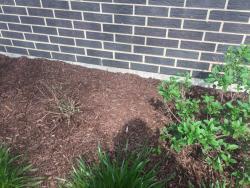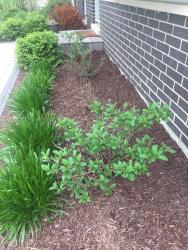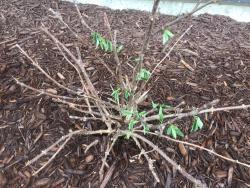Hi Luis! Thanks for getting back to me. Sorry I'm so late in getting back to you.
I live just outside of Chicago in Zone 5. Three years ago we add new landscape to our front yard. The "sick" plant is one of several Little Quick Fire hydrangeas we planted. For comparison purposes, I've attached photos of the ones closest to this poor plant. As you can see, they're doing pretty well. The leaves you see on the sick plant are the first ones to leaf out this spring. Most of these leaves look limp. I think one or two are slightly perky.
We did have a hard frost on April 25. We covered all of our hydrangeas that night. Nothing was injured as a result. This little plant was struggling before the frost and now looks even worse. I have not noticed new leaves coming from the ground up on the Little Quick Fires. My Endless Summer hydrangeas always have a lot of new growth from the bottom.
I fed all of my hydrangeas with Miracid on May 7. I'm not going to cut back the dead wood until the beginning of June unless you advise otherwise. Please let me know if there is something I can do.
Thanks for all of your help. It's much appreciated.
Susan






